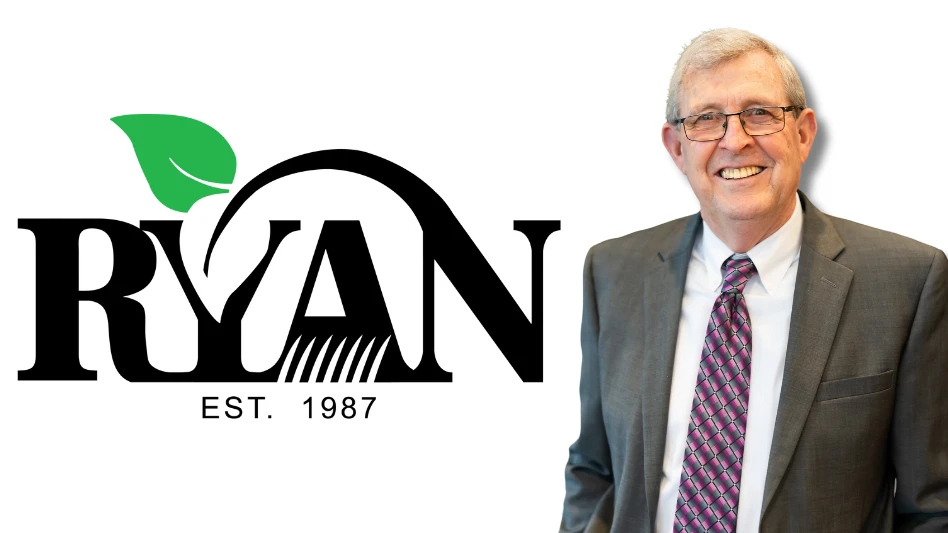While landscape contractors have enjoyed a vigorous surge in construction during 1998, irrigation supply has been adapting to changing dynamics in manufacturing and distribution. Contractors, focused on abundant work and hiring qualified employees, might have overlooked the rumbling within the distribution network.
We don’t know how the competitive battle between bona fide irrigation distributors and mass merchandisers will end, but these changes are expected to impact contractors in future years. However, a study by the Farnsworth Group for the Weather-matic Division of Telsco Industries provides insight. Contractors are benefiting from prices suppressed by competition between retail mass merchandisers and irrigation distributors fighting over market share. The downside is that short-term price advantages could be offset by the cost of technical services which were once free to customers from irrigation distributors and will only become more important as water restrictions continue to develop.
BLUE LIGHT SPECIALS. Mass merchandisers have captured the attention of irrigation manufacturers be-cause they buy in huge volume. Selling to independent hardware and home stores requires two-step distribution, with brokers selling to the store owners. Manufacturers can eliminate one step by selling direct to mass merchandisers, who are expected to control nearly half of all retail hardware sales shortly after the turn of the century.
Aggravating the competitive struggle between distributors and mass merchandisers is the decreasing distinction between wholesale “contractor quality” products and retail irrigation components found on the shelves at mass merchandisers. Manufacturers are concentrating more on efficiencies and lower inventories, and, consequently, separate wholesale and retail product lines are discouraged.
Mid-sized irrigation distributors are being squeezed the most, according to the Farnsworth Report, as they are most vulnerable to competition from mass merchandisers.
In addition, mass merchandisers have at least two advantages: economies of scale and tighter margins. The Farnsworth Report indicated that mass merchandisers seek additional product lines to sell as they expand and mature. Irrigation is one of the lines they have adopted to fuel continuing growth, and because their overhead is spread across many different types of products, profits are often higher than for distributors.
Fearful of being mid-sized, distributors are aggressively trying to gain economies of scale to stay in the game and are behaving more like mass merchandisers with serve-yourself bins, longer hours, more locations and lower prices. But lower margins threaten services, such as training, advice, delivery and credit terms.
At the same time, manufacturer consolidation has reduced the number of product lines available for distributors to carry. The result? More distributors taking on debt to expand in the face of lower profit margins.
Price pressure on both the contractor and the irrigation distributor ultimately reduces the technical safety net for contractors. Distributors are being squeezed from both ends, by the manufacturer and the buyer, and as a result, they have to reduce services to cut costs so they can survive.
The Farnsworth Group predicted that, when the dust settles, irrigation distributors who specialize and have the skill to demand what they believe they are worth will emerge victorious. Contractors will have to choose between the technical vacuum of mass merchandisers or the support net of dedicated irrigation distributors.
LOYALTY: THE TWO – WAY STREET. There are some signs that jockeying by manufacturers for better profit margins has reduced brand loyalty. Sixty percent of irrigation contractors always or frequently substitute products different than those specified in designs, according to an Irrigation Association survey. A third of contractors mixed brands of sprinklers, valves and controllers on jobsites.
The results might reflect contractors’ and distributors’ disappointment from manufacturers selling products similar to those offered by mass merchandisers. It could also indicate loyalty toward short-line manufacturers who have preserved the exclusivity of their “contractor-quality” products. The Farnsworth study revealed that “niche players” in wholesale distribution will be able to protect their operating profit because they offer exclusive products and services while the operating profits of mid-sized distributors are shrinking.
Niche distributors are, in fact, becoming the defenders of smaller manufacturers. By focusing on specific groups of customers, they aren’t trying to compete with mass merchandisers. Their specialization results in the greatest degree of expertise about their customers’ needs. Those needs often fall in product categories that don’t meet the volume standards of larger manufacturers. These manufacturers then are being stretched in two directions, by retail and by specialty products distributed by the irrigation distributor. It is possible that they might have to concede low-volume specialty items to meet their volume and profit standards.
| Outlook Strong For |
|
Irrigation
It’s no secret that irrigation services have been booming in recent years. The good news is that contractors expect the good times to continue. According to a recent Lawn & Landscape survey of 500 irrigation contractors and 500 landscape contractors, 82 percent of the industry expects irrigation revenues to increase an average of 22.3 percent over the next two years. Meanwhile, just 2.6 percent of respondents predicted a downturn in the market, with 15.4 percent anticipating little or no change at all. With 83 percent of the respondents offering some type of irrigation-related service - including nearly 60 percent of landscape contractors - the fact that 90.1 percent of them said their irrigation revenues increased from 1996 to 1997 (by an average of 14.7 percent) shows how rapidly the industry is indeed growing. Focusing specifically on landscape contractors, more than 95 percent of respondents reported an increase in irrigation revenues last year, and they expect average increases of 22.3 percent in irrigation installation revenues and 11.3 percent for irrigation maintenance revenues over the next two years. Irrigation is clearly uncharted water for many landscape contractors, as almost one-third of them entered the market within the last three years, where more than 88 percent of irrigation contractor respondents did so at least six years ago. As expected, irrigation-oriented revenues represent a much greater portion of the irrigation contractor’s business than the landscape contractors’. The survey results indicate, however, that both contractor groups continue to diversify their business mix. More than 22 percent of landscape contractors earn at least 25 percent of their total revenues via irrigation services while 21.4 percent of irrigation contractors generate at least 25 percent of their revenue from non-irrigation services. Companies offering irrigation services continue to focus primarily on the residential market, with homeowners representing better than 63 percent of contractors’ collective business and more than 42 percent of contractors saying residential contracts account for at least 70 percent of their overall irrigation volume. Regarding product purchasing, there is no calendar-driven time for purchasing supplies, as 65.4 percent of respondents indicated they purchase supplies on a job-by-job basis or as inventory needs replenishing. Meanwhile, the company owner is the final decision-maker on product purchasing almost 70 percent of the time followed by the designer/specifier 25 percent of the time. - Bob West |
DIRECT IRRIGATION. Hanging over irrigation distributors, and therefore contractors, is the manufacturers have to consider selling direct to any large buyer to boost profitability. Cutting out steps in distribution significantly increases profit but reduces the ability to communicate special attributes of products. Complicated products need to be explained to customers. This complexity keeps products above the generic commodity level.
Some manufacturers have beaten the conventional system by hiring their own technical representatives for key markets such as golf and municipal. Management groups such as American Golf, Club Corporation of America and Environmental Golf will soon control 5 percent of the golf courses in the U.S. They succeed with a combination of economy of scale, technical support and management expertise, and they seek direct purchases from manufacturers.
Consolidation within the landscape industry provides equally fertile ground for direct sales to companies such as TruGreen-Chemlawn, The Brickman Group, LandCare USA and Environmental Care. Will manufacturers exclude such large buyers from distributor territorial contracts even though distributors invest years and money in landing and cultivating large accounts? If so, how does the manufacturer repay the distributor for this investment when these accounts are converted to direct?
(This consolidation among landscape contractors creates companies with considerable opportunities to enjoy price breaks when purchasing products that the small or mid-sized contractor can’t take advantage of. These price breaks may afford larger companies the opportunity to charge less for the same service smaller companies offer. Looking at it this way, it’s clear that the average landscape contractor’s situation isn’t too unlike that of the irrigation distributor.)
Consolidation generates economies of scale that boost productivity and increase volume. The only things that level out the playing field are the cost of capital to expand (interest) and greater separation between the company and the customer. The smaller distributor and contractor retain a closeness to their customer that size can diminish. This closeness enables smaller organizations to help their customers face challenges, such as training employees, satisfying local building codes and adapting to water use ordinances in their area.
Manufacturers, meanwhile, are exposed to the liability of their products being improperly installed by inadequately trained people. When water use regulations become more serious, liability for misuse may filter back to the manufacturer. Therefore, there is a downside to selling products through a tech-nical vacuum at the retail or wholesale level.
LIQUID GOLD. The tug of war over water is just beginning. Some eastern cities don’t have the infrastructure (large enough pipes) to carry the water for landscape irrigation during the summer. Farmers fight with municipalities and environmental groups over water in the West as falling aquifers and low rainfall threaten potable water supplies from Texas through Nebraska. Phoenix and Las Vegas, the two fastest growing cities in the country, are spreading like wildfire across deserts without any new sources of water. Canals delivering water from the Colorado River to California aren’t even lined yet and the state is already debating a $300-million package to improve them.
The writing is on the wall. Priorities for potable water will be set over the next 20 years. Waste won’t be tolerated. Water will be recycled. Present landscape standards will change. A recent ordinance in Las Vegas restricting how much new turf that can be installed in a landscape is just the beginning.
Under present circumstances, it is highly doubtful whether the technical void of mass merchandisers can meet the informational demands of precise water application for landscape purposes. The irrigation contractor is a major part of the only logical solution to water conservation. Large projects will require an irrigation designer/consultant. Certification will separate the knowledgeable from the less professional contractors.
LOOKING BACK. As water becomes more valued, we will look back and criticize the way we wasted it in the past. Contractors will personally judge the efficiency of the systems they installed and realize, to an extent, that this inefficiency was dependent upon the product they purchased. Distributors will judge the same inefficiency based upon the products they sold.
The scaffolding that holds the irrigation industry up today has conceivably been weakened by the increased role of mass merchandisers in the distribution chain and the pressure that this has put on manufacturers to provide them with products to sell because of the volume of product they purchase. Technology for retail distribution is often considered secondary to professional-quality products and it may not deliver the same efficiency possible from well-designed irrigation systems. If this technology is forced on professional contractors to meet productivity and profit goals it could backfire.
Wasteful irrigation could be viewed some day with the same disdain as tobacco. We didn’t do what we should have done knowing what we knew at the time. Smoking is, or was, a reward to many people for hard work and success. Landscaping is also a reward for hard work and it is, to millions, very habit forming. Unlike smoking, landscapes produce oxygen, cool our homes and cities and provide habitat for wildlife. It’s a good habit, one that deserves the water required to protect it.
But, if we condone waste, many people could be deprived of landscaping in the future. That will result in lower sales by mass merchandisers, who will jump to another source of cash flow to fuel their giant stores. We could all benefit from some longer term thinking about water use and irrigation efficiency.
We may not want to think about these things now, but we should. Next time you drive past your local irrigation distributor to save 10 percent on parts at Lowe’s, think of the possible consequences down the road. Think about who is going to train your new employees as you grow. Think about the cost of redoing a job because you didn’t know the building code and neither did the sales personnel at the store from which you bought your supplies.
This trend is not happening only in the irrigation industry. Our manufacturers, distributors and large contractors don’t really have much choice in the matter. It’s capitalism, pure and simple. We all must adapt.
The thing that makes us different is water. As a vital, yet limited resource, water will certainly be regulated in the future.Technical compliance will be enforced. Knowledge and service will be very important.
In the final analysis, the overriding factor is how much we value our landscapes. The more dependent we are on landscapes, the more we will do what it takes to keep them. That includes meeting new restrictions and investing in technology that lets our customers keep their landscapes.
The author is president of IrriCom, Banning, Calif., the communications arm of the Irrigation Association.

Explore the October 1998 Issue
Check out more from this issue and find your next story to read.
Latest from Lawn & Landscape
- LMN partners with Attentive.ai
- Get to know the generations working for you
- Addressing addiction in landscaping
- Fairway expands national footprint with 6 acquisitions
- Graze Robotics opens new headquarters in Plano, Texas
- Addiction in the green industry
- Kress earns Sourcewell approval
- The best laid plans





